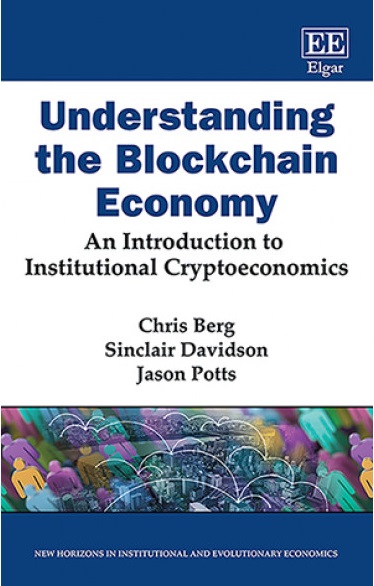With Sinclair Davidson, Jason Potts and Bill Tulloh. Originally a Medium post.
In his 1945 essay “The Use of Knowledge in Society”, Friedrich Hayek first drew attention the knowledge problem. Information is distributed throughout an economy. No central planner can effectively bring it together.
Hayek, obviously, was talking about a human economy, where people exchange with people. But machines suffer from knowledge problems too. This is the domain of nanoeconomics — which we suggest is the study and evaluation of the economics of machine systems.
Hayek in the machine
Nanoeconomics is about human-machine exchange, and machine-machine exchange. It is the economics of distributed ledgers and artificial intelligence, of object-capability programming and cybersecurity, of ‘central planning’ in the machine, and of ‘markets’ in the machine.
As we’ve come to understand blockchains and other distributed ledger technologies as an institutional technology, we’ve also learned that not only can blockchains coordinate and govern decentralised human economies (as governments, firms and markets do) but they can coordinate and govern decentralised machine economies (or human-machine economies).
This extends what Hayek called catallaxy — the spontaneous order of the market — from the market coordination of human action to the coordination of human-to-machine and machine-to-machine economies.
Nanoeconomics is not a new idea. In their Agoric papers published in 1988, Mark Miller and K. Eric Drexler developed the idea of a computational system as a space for economic exchange. The development of object-oriented programming has created software agents, which vie for scarce resources in the machine. But right now, these agents are governed through planning, not markets. Miller and Drexler suggested an alternative: a market-based computation system. In this system:
machine resources — storage space, processor time, and so forth — have owners, and the owners charge other objects for use of these resources. Objects, in turn, pass these costs on to the objects they serve, or to an object representing the external user; they may add royalty charges, and thus earn a profit.
With global computers like the smart-contract platform Ethereum we now have the bones of such a market-based computational architecture.
Nor is the idea of an analytical layer below microeconomics a new idea. Kenneth Arrow used the word nanoeconomics for the study of single buying and selling decisions. But that line of research has been subsumed into behavioural and now neuroeconomics. Alternatively it is used to describe the economics of nanotechnology.
But in an age where we deploy digital, quasi-autonomous agents to act on our behalf, and where the traditional economic problems of opportunism, asset specificity and bounded rationality are intimately tied into cybersecurity and digital services, we have to drive our economic analysis — and our institutional choices — into the machine.
Nanoeconomics is the study of an economy of software agents, using market institutions and property rights to order computation and bid for computational resources. It is the study of choices and market exchange that occur between computational objects in object-oriented software architectures, and which are economically coordinated through blockchain infrastructure.
As Miller and his colleagues have pointed out, a key problem with ‘centrally-planned’ computation are the implications for computer security. A decentralised software economy would instead seek to operationalise tradable property rights for access to objects through the principle of least authority.
Contract theory, not choice theory
Nanoeconomics is not simply a new field of economics — it is a significant extension. Where the choice-theoretic branch of economics has managed to drive its analysis down into the brain, the contract-theoretic branch has stopped at the level of human-to-human exchange.
What do we mean by choice-theoretic and contract-theoretic? Choice theory studies why people make the choices they do. This branch has traditionally been split into macroeconomics (the study of the aggregate economy) and microeconomics (the study of individual market choices).
In recent decades many economists have sought to drive their analysis deeper into the brain. Why do they have different preferences? Behavioural economics applies psychology to economics, and even more recently neuroeconomics applies biology. The choice-theoretic branch of economics goes: macro, micro, behavioural, neuro.
The contract-theoretic branch is the economics of Ronald Coase, James Buchanan, Oliver Williamson, Friedrich Hayek, and Elinor Ostrom. This branch looks at exchanges (that is, contracts) and the human institutions we have devised to constrain or facilitate those exchanges. Firms, markets, governments, clubs and commons (and now blockchains) are institutional environments to make exchanges, sign contracts, and otherwise pursue economic goals.
Contract-theoretic economics starts with constitutional economics — the macro level structuring of political and economic choices. It applies a transaction cost approach to microeconomic analysis. And with nanoeconomics we can start look at machine agents as economic actors, making exchanges — and acting opportunistically.
As more and more of the economy becomes machine-mediated, we need to worry about the security and efficiency implications of centrally-planned machine economies. But the underlying knowledge problems are general.
We’ve previously argued that blockchains are constitutional protocols for catallactic ordering. Nanoeconomics is about how they can not only facilitate improved decentralised economic coordination for humans, but also for machines.


